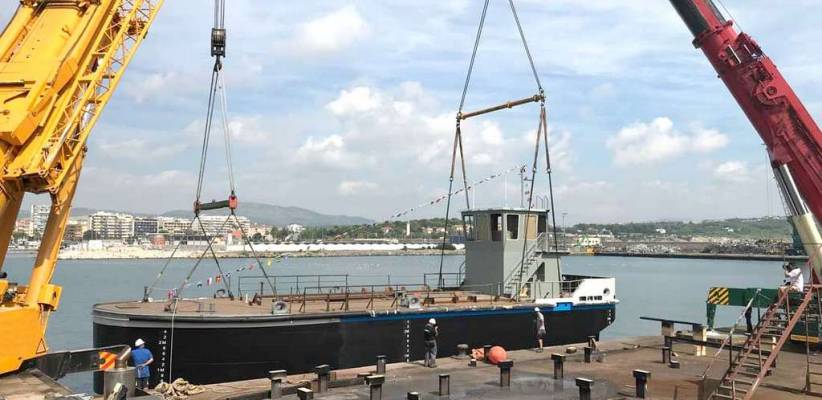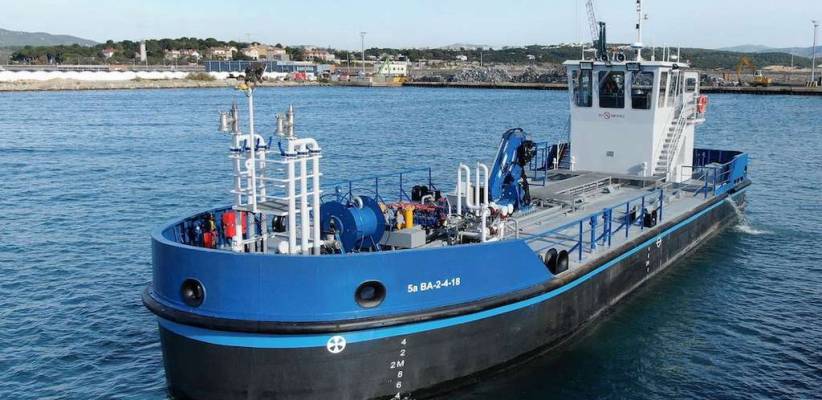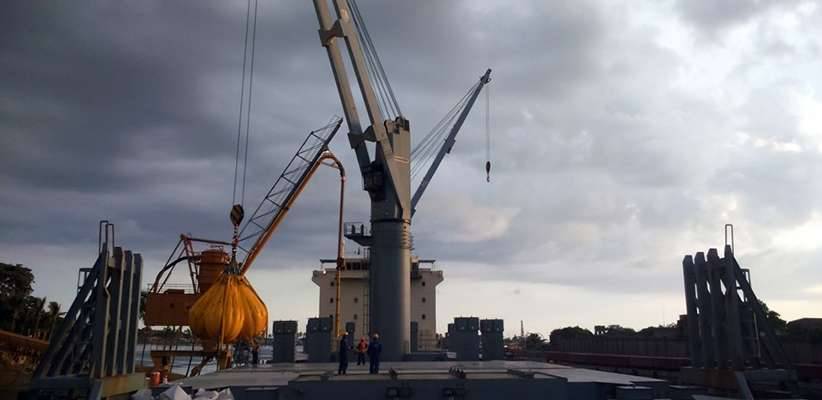Electrical systems in modern vessels
Electrical systems in the naval industry have evolved from simple auxiliary installations to complex core engineering systems. This transformation meets increasing demands for efficiency, safety, and performance in vessels of all sizes. Naval electricity covers power generation, distribution, and utilization across various onboard equipment and systems.
Electrical systems and equipment in the naval industry
This article provides a general overview of key elements and concepts in naval electricity, including load balancing, lighting and safety systems, essential and emergency equipment, and maintenance tasks.
How does electricity work on a ship?
Electricity on a ship operates through an integrated system that includes generation, distribution, and storage. Unlike land-based installations, naval electrical systems must function autonomously, without connection to an external grid, except when docked in port.
A typical naval electrical system includes:
Main generators powered by diesel engines, gas turbines, or steam
Batteries for temporary energy storage
Main and emergency distribution panels
Converters and transformers to adjust voltages
Wiring with specialized marine protection
Monitoring and protection systems
Modern vessels implement redundant configurations to ensure that system failures do not compromise safety or operational capacity.
What type of energy does a ship use?
Ships traditionally use electricity generated by internal combustion engines, mainly diesel. However, the industry is shifting toward more sustainable energy sources:
Diesel-electric: Diesel engines drive generators that produce electricity for propulsion and onboard services.
Liquefied natural gas (LNG): A cleaner alternative to diesel.
Hybrid: Combines combustion engines with electric batteries.
Solar: Photovoltaic panels as a supplementary power source.
Wind: Advanced rigid sails in some designs.
100% electric: Vessels like SYM Naval’s Castalia, a zero-emission ship.
SYM Naval’s Castalia represents progress in zero-emission vessel development, contributing to more sustainable maritime transport initiatives.
Electrical load balance on vessels
Electrical load balance is a fundamental calculation in ship design. This process determines a vessel’s energy needs and ensures the proper sizing of generation systems.
The balance includes:
Identifying all onboard electrical consumers
Categorizing by service type (essential, important, normal)
Determining each unit’s nominal power
Applying utilization factors based on operational conditions
Calculating total demand under different scenarios (navigation, maneuvering, port, emergency)
Expected power demand is obtained by multiplying nominal power by demand factors, considering partial load and usage simultaneity. This calculation ensures proper generator sizing, avoiding costly oversizing or power shortages.
How does a barge generate electricity?
Barges and commercial vessels primarily generate electricity through gensets, which include:
Prime mover (diesel, natural gas)
Synchronous alternator
Control and regulation systems
Protection devices
The generation process follows these steps:
The prime mover converts fuel’s chemical energy into mechanical energy.
This mechanical energy transfers to the alternator via coupling.
The alternator converts mechanical energy into electrical energy through electromagnetic induction.
Regulation systems maintain stable frequency and voltage.
Larger vessels often operate multiple generators in parallel to distribute load and ensure redundancy.
Naval lighting systems
Lighting systems on vessels serve critical functions related to safety, operations, and habitability.
Naval lighting systems include:
General lighting: Ambient lighting in living spaces.
Task lighting: Adjusted for specific tasks in operational areas.
Navigation lighting: Exterior lights required for signaling.
Emergency lighting: Activates automatically in power failures.
Evacuation lighting: Low-level guides for exiting spaces.
Do ships have electrical outlets?
Yes, modern ships feature electrical outlets similar to land-based installations but adapted for marine environments:
Watertight outlets with splash protection (IP44 or higher)
Highly sensitive differential protection systems
Variable voltages depending on operational zones (110V, 220V)
Shore power connections for external supply in port
Galvanic isolation systems to prevent corrosion
Passenger and recreational vessels include multiple outlets for comfort devices, while commercial ships prioritize industrial outlets for tools and operational equipment.
Activation process of a vessel's electrical system
Starting up a vessel’s electrical system follows a structured process that varies by ship type and size. Shipyard clients and vessel owners must understand this process for safe and efficient operation.
A standard protocol for professional vessels includes:
Pre-start visual inspection of main systems
Checking service and starter battery charge levels
Activating main switches on the distribution panel
Starting the auxiliary or main generator based on power needs
Sequentially enabling circuits by priority order
Synchronizing additional generators if demand increases
SYM Naval integrates advanced energy management systems in its vessels, optimizing power plant operation. New-generation vessels like Castalia Electric Boat by SYM Naval advance toward more sustainable propulsion systems.
Electronic equipment on the bridge
The bridge centralizes navigation and control systems, representing a significant electrical demand that must be considered in system design.
Essential equipment includes:
Integrated navigation systems
Gyro and magnetic compasses
Radar and ARPA (Automatic Radar Plotting Aid)
Global Positioning System (GPS)
Echo sounders and electronic chart systems
Communication systems (GMDSS)
Technical and navigation alarms
Autopilot and steering systems
These systems operate on dedicated networks with multiple redundancy layers to ensure continuous operation under adverse conditions.
Lighting areas
Different vessel areas require specific lighting levels. The main categories include:
Common areas: Cabins, bathrooms, dining rooms, recreation rooms, and spaces on cruise ships like commercial areas, gyms, restaurants, and pools.
Navigation areas: Bridge and associated navigation, steering, and radio equipment.
Service areas: Offices, kitchens, provisioning storage, and laundry services.
Operational areas: Engine room, boiler room, work areas, engine control room, workshop, cargo control rooms, and emergency generator rooms.
Maintenance of naval electrical systems
Preventive and corrective maintenance of naval electrical systems ensures reliability and safety. Key tasks include:
Inspecting connections and wiring
Conducting insulation and resistance tests
Verifying protection systems
Servicing generators and alternators
Checking batteries and emergency systems
Calibrating measurement instruments
Updating control systems
Maintenance plans follow classification society regulations and international bodies like the International Maritime Organization (IMO). Learn more about our ship repair and conversion services.
Trends in naval electricity
The naval industry is shifting toward more efficient and sustainable electrical systems. Projects like SYM Naval’s Castalia represent this new generation of low-emission vessels.
Other trends include:
Fully electric propulsion systems
DC distribution networks
Renewable energy integration
Advanced electrical system automation
High-density energy storage developments
These innovations aim to reduce maritime transport’s environmental impact while improving efficiency and vessel safety.





